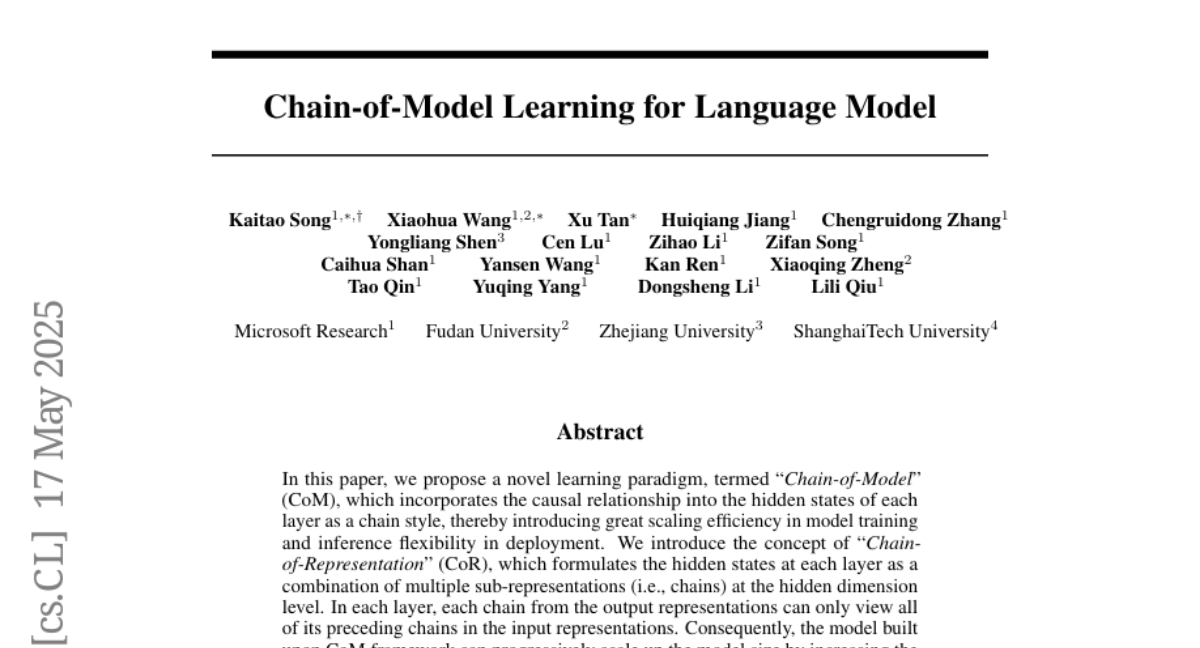Chain-of-Model Learning for Language Model
Kaitao Song, Xiaohua Wang, Xu Tan, Huiqiang Jiang, Chengruidong Zhang, Yongliang Shen, Cen LU, Zihao Li, Zifan Song, Caihua Shan, Yansen Wang, Kan Ren, Xiaoqing Zheng, Tao Qin, Yuqing Yang, Dongsheng Li, Lili Qiu
2025-05-20

Summary
This paper talks about a new way to build language models, called Chain-of-Model learning, which helps them work faster and more flexibly by connecting different parts of the model in a special chain.
What's the problem?
The problem is that as language models get bigger and more powerful, they use up a lot of computer resources, making them slow and hard to use, especially when you want them to be both accurate and efficient.
What's the solution?
To solve this, the researchers created a method where the model's inner workings, or hidden states, are organized in a chain-like hierarchy. This setup allows the model to scale up more efficiently and makes it easier to adjust how much computing power is used during tasks.
Why it matters?
This matters because it means we can have language models that are not only smarter but also faster and more practical to use in real-world situations, making advanced AI tools available to more people and for more uses.
Abstract
A novel Chain-of-Model framework introduces hierarchical hidden state chains in Transformers to improve scaling efficiency and inference flexibility for language models.